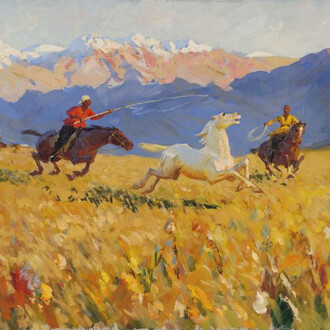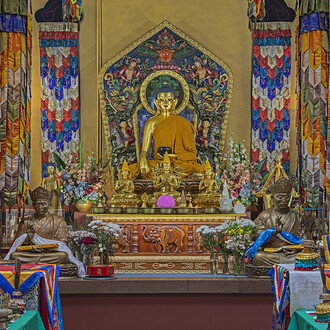The exposition covers 110 years counting down from the legendary Last futuristic exhibition 0.10, which took place in St. Petersburg in 1915. The exhibition displayed such landmark works as Kazimir Malevich's Black square and Vladimir Tatlin’s Corner counterrelief that became a starting point for supremacism and constructivism. These trends not only defined the shape of Russian design, but also made an impact on the entire world.
The exhibition 110│Russian design 1915-1925 will become a permanent exposition of the Moscow Design Museum in the Western Wing of the New Tretyakov Gallery. It displays over 700 items and highlights such movements as futurism, supremacism, constructivism, post-constructivism, art déco and neo classics, organic and cosmic modernism, functionalism, and post-modernism; it raises the theme of Russian and Soviet cultural codes and reflects such phenomena as art design and collection design. Passing through the halls, one will be able to see how styles changed, and how the visual language of the medium sometimes renewed completely in just a few years at the turns of history.
Historical exhibits include symbolic items of the Soviet lifestyle: the first mass produced TV set KVN and plump refrigerator ZIL; rational motor sledge “Chuk and Gek” and children's pedal three-wheel tractor; siphon “Penguin”, produced by a defense enterprise, and a bottle of cult perfume “Red Moscow”. The display shows for the first time replicas of the stack made by Yuri Sluchevsky, who conceived the principles of Soviet sectional furniture, and the motor boat by Yuri Solovyov, who later founded the Institute of Technical Aesthetics. There is a wide range of artefacts reflecting the spirit of time and key historical events: revolution, conquest of the Arctic, exploration of the space, Festival of Youth and Students, Olimpiad-80 and others. One may see the fabric ‘Cheluskints’, vacuum cleaner “Saturn”, samovar “Sputnik” and the namesake three-leg stool constructed by the same principles as the first Sputnik, rare samples of propaganda porcelain, textile and many others.
The Moscow Week of Interior and Design, one of the largest events in this sphere, stepped up as the co-organizer of the exhibition. Over 45 participants of the event put together the contemporary part of the exposition and presented more than 100 items displaying the development of the industry in Russia today.
Mantera Supreme, a flagship luxury hotel in the Mantera Hotels lineup, acts as a special partner of the Moscow Design Museum’s exposition.
The technical partner of the exhibition is Otechestvo Company, a furniture producer. The company provided stacks and exhibition equipment that became the basis of the “100” expositional solution.












